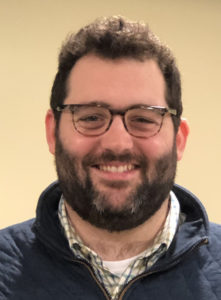In this season of social distancing, I decided to get healthy. There really wasn’t much else to do, if I’m being honest.
I’ve eaten more vegetables in the past two months than I probably did all last year. I’ve never bought so much spinach or zucchini or asparagus. And I started running. I hate running. I hate every step. But I’m doing it.
It began as nice walks around the neighborhood every once in a while. Then it escalated to daily walks. Then daily long walks. Then a little running. And now I can almost run a 5K without having to walk at all. I’m averaging almost five miles a day of running and walking.
My legs are so tired. They’re sore right now as I write this. But even in my soreness, my body feels so much better. It’s the weirdest thing.
Hellos and honeysuckle
In my walking and running, I’ve met several neighbors. Before all of this, I didn’t recognize any of my neighbors, much less know their names like I do now. We’ll have chats from acceptable distances away, or exchanges smiles and waves (or sometimes just a grimace if I’m running).
I regularly steal honeysuckle from one of my neighbor’s side yards, and I stand on the bank of somebody else’s pond to look for ducks and turtles. I’ve become an armchair expert on different duck types. Global pandemic aside, my life is pretty pleasant right now.
A different jogger
But also during this time, I read James Cone’s book The Cross and the Lynching Tree, which narrates the experience of black folk living in the United States.
As the title suggests, it draws comparisons between Jesus on the cross and the lynching of black folk. Cone spends the whole book lamenting that white folk continually fail to make the connection between the two that is so apparent to black folk.
Then, just a few weeks ago the video footage of two white men chasing and shooting Ahmaud Arbery, a black man out jogging, was released all over the news. Arbery was killed on his jog on February 23, but most of us didn’t know anything about this until the video was released. As the video shows, lynchings still happen in America.
Things I can do
As the death of Ahmaud Arbery, reading James Cone, and my own running have coincided, I have entered into an endless loop of reflection.
As a white man, I am able to run basically wherever I want to without fear. My biggest concern is shin splints.
I can trespass for honeysuckle. I can stand next to the duck pond for as long as I want. And nobody will ever question it.
A past in the narrative
It feels like I am always waking up to my privilege. I am always taking it for granted and forgetting that others don’t have it. Too often, I am the white mainline Christian that Cone critiques — unable to see the oppression of my black neighbors.
It also feels like I am always waking up to my past — not my personal past, but my family’s past and the past of the communities I am part of.
And that past is often not very flattering.
Just last week, my mother was going through a box of old family things and came upon a propaganda letter from the Little Rock Citizen’s Council. The letter contained satirical and overtly racist instructions for the “Southern Sit-downers Association.”
Neatly folded with key parts underlined, I don’t think my ancestors kept this letter because of how appalled they were by it. I know too much about them to be that naïve. My family owned slaves and then continued slavery through sharecropping for quite some time.
Waking up to these things is not fun.
Waking as church
Even at First Presbyterian Church, we have our own history to keep waking up to. We cannot forget that four of our founding members were enslaved people, and three of them were enslaved by our first pastor. We cannot forget that St. James Presbyterian Church was formed out of FPC by newly freed slaves just after the Civil War, and it took 150 years for us to worship together.
Again, these things are not fun to wake up to. But we must keep waking up, or better yet, we must stay awake.
The most asleep
It is good news that we are not our predecessors. I am not my family member who saves White Citizen’s Council letters and upholds the Jim Crow South with sharecropping cotton. As a congregation, we have acknowledged the sins of our predecessors and begun the process of reconciliation with our neighbors of color. We can celebrate these things, but we still have waking up and work to do.
In April of 1963, Rev. Dr. Martin Luther King, Jr. wrote a letter from his jail cell in Birmingham to the white clergymen who critiqued him for being “unwise and untimely.” In the letter, he writes “I have almost reached the regrettable conclusion that the Negro’s great stumbling block in his stride toward freedom is not the White Citizen’s Counciler or the Ku Klux Klanner, but the white moderate.”
For King, and for Cone, the white moderate is the most asleep of all. We are always in danger of lulling into the sleep of the white moderate, or more accurately, the white mainliner.
We look at how far we’ve come and celebrate it, without looking ahead to see how much farther we have to go. We preach anti-racism, but fail to see the connection between the cross and the lynching tree. We deplore acts of hatred and harmful ideologies, but fail to have true empathy for our neighbors who are the victims of them.
Closing words
I pray that this time we will wake up and stay awake. We must wake up to the truth that racism is alive and well in America. The Civil Rights Movement is not over and has not yet accomplished its goal.
White folk enjoy and take for granted safety and security in the most ordinary parts of life, while going on a jog is still dangerous for people of color.
Finally, I’ve been learning guitar during this time, and I’ve been haunted by the lyrics of one of the songs I’ve learned: “Blowin’ in the Wind” by Bob Dylan. I hope that they will haunt you too, so I will close with them:
Yes, and how many years can some people exist
Before they’re allowed to be free?
Yes, and how many times can a man turn his head
And pretend that he just doesn’t see?
…
Yes, and how many ears must one man have
Before he can hear people cry?
Yes, and how many deaths will it take ‘til he knows
That too many people have died?

